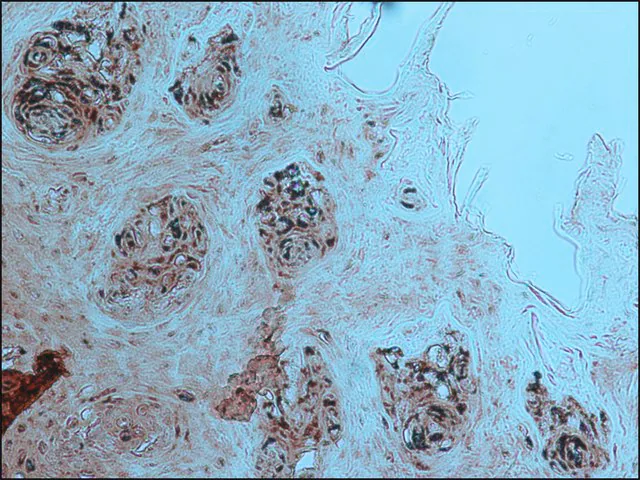您的位置:首页 > 产品中心 > Anti-Endothelial Cells antibody, Mouse monoclonal
Anti-Endothelial Cells antibody, Mouse monoclonal

| 产品编号: | 3144597 |
| 规格: | clone P1H12, purified from hybridoma cell culture |
| 包装规格: | 0.2 ML |
| 产品类别: | 进口试剂 |
| 品牌: | Sigma-Aldrich |
| 优惠价: | 立即咨询 |
产品别名
Anti-Endothelial Cells antibody, Mouse monoclonal
Anti-CD146
基本信息
| MDL number | MFCD03792419 |
| NACRES | NA.41 |
| General description【一般描述】 | Monoclonal Anti-Endothelial cells (CD146) (mouse IgG1 isotype) is derived from the P1H12 hybridoma produced by the fusion of mouse myeloma cells and splenocytes from mice immunized with human umbilical cord cells (HUVEC). CD146 (cluster of differentiation 146) is also known as the melanoma cell adhesion molecule (MCAM), cell surface glycoprotein MUC18, A32, Mel-CAM and S-Endo-1. It is encoded by the MCAM gene. It belongs to the immunoglobulin supergene family with five immunoglobulin-like domains (V-V-C2-C2-C2), a transmembrane region and a 63 residue cytoplasmic tail. It is located on human chromosome11q23. |
| Specificity【特异性】 | Recognizes cultured microvascular and large-vessel endothelial cells (MVEC and HUVEC, respectively) and endothelial cells in tissues and in circulation. |
| Immunogen【免疫原】 | human umbilical cord cells (HUVEC). |
| Application【应用】 | Anti-Endothelial Cells antibody, Mouse monoclonal has been used in:
|
| Biochem/physiol Actions【生化/生理作用】 | Soluble CD146 (cluster of differentiation 146) is associated with the activation of angiogenesis. Circulating endothelial cells (CECs) may help in predicting clinical outcome in cancer patients. Tumor endothelial markers are expressed in a wide range of tumor types and in normal vessels associated with wound healing and corpus luteum formation. It may have significant implications for the development of anti-angiogenic therapies as well. CD146 (cluster of differentiation 146) expression can stimulate tumor development in human melanoma, through enhanced interaction between melanoma cells and endothelial cells. However, in breast carcinoma, CD146 may act as a tumor suppressor. CD146 is expressed by the intermediate trophoblast in the placental site and binds to its putative receptor in uterine smooth muscle cells during implantation and placentation, thus limiting trophoblastic invasion in the myometrium. |
| Physical form【外形】 | Solution in 0.01 M phosphate buffered saline, pH 7.4, containing 15 mM sodium azide |
产品性质
| Quality Level【质量水平】 | 200 |
| biological source【生物来源】 | mouse |
| conjugate【偶联物】 | unconjugated |
| antibody form【抗体形式】 | purified immunoglobulin |
| antibody product type | primary antibodies |
| clone【克隆】 | P1H12, monoclonal |
| form【形式】 | buffered aqueous solution |
| mol wt【分子量】 | antigen 130 kDa |
| species reactivity | human |
| technique(s) | flow cytometry: suitable using 2% paraformaldehyde 9:1 methanol immunocytochemistry: suitable using 4% paraformaldehyde 0.1-0.5% triton X-100, smears or live cells immunohistochemistry: suitable using using acetone-fixed sections of human tongue immunoprecipitation (IP): suitable indirect ELISA: suitable microarray: suitable |
| isotype【同位素/亚型】 | IgG1 |
| shipped in【运输】 | dry ice |
| storage temp.【储存温度】 | −20℃ |
产品说明
| Disclaimer【免责声明】 | Unless otherwise stated in our catalog or other company documentation accompanying the product(s), our products are intended for research use only and are not to be used for any other purpose, which includes but is not limited to, unauthorized commercial uses, in vitro diagnostic uses, ex vivo or in vivo therapeutic uses or any type of consumption or application to humans or animals. |




